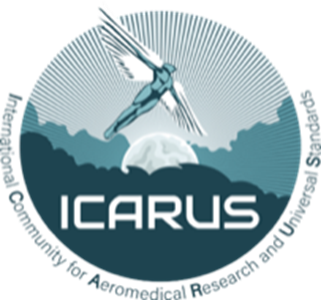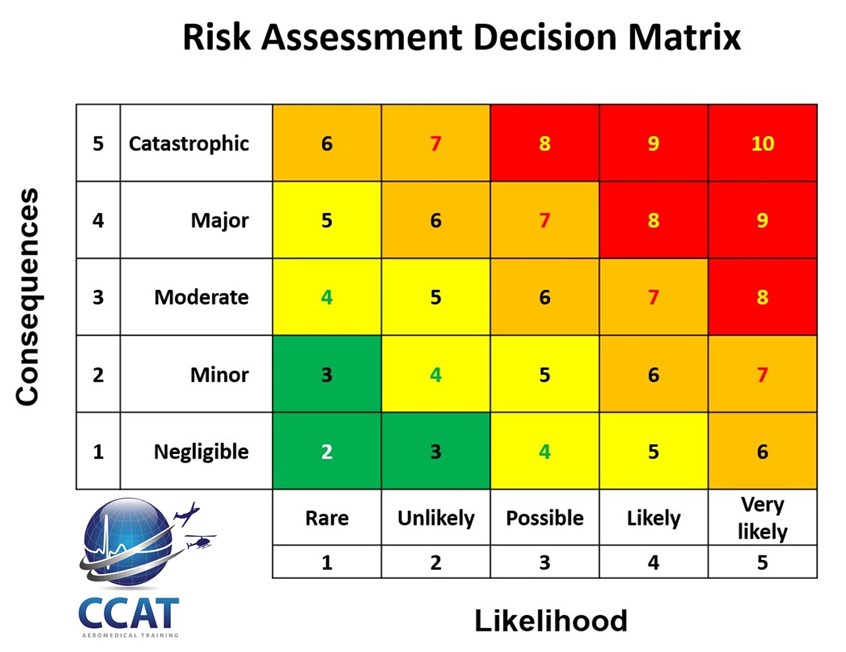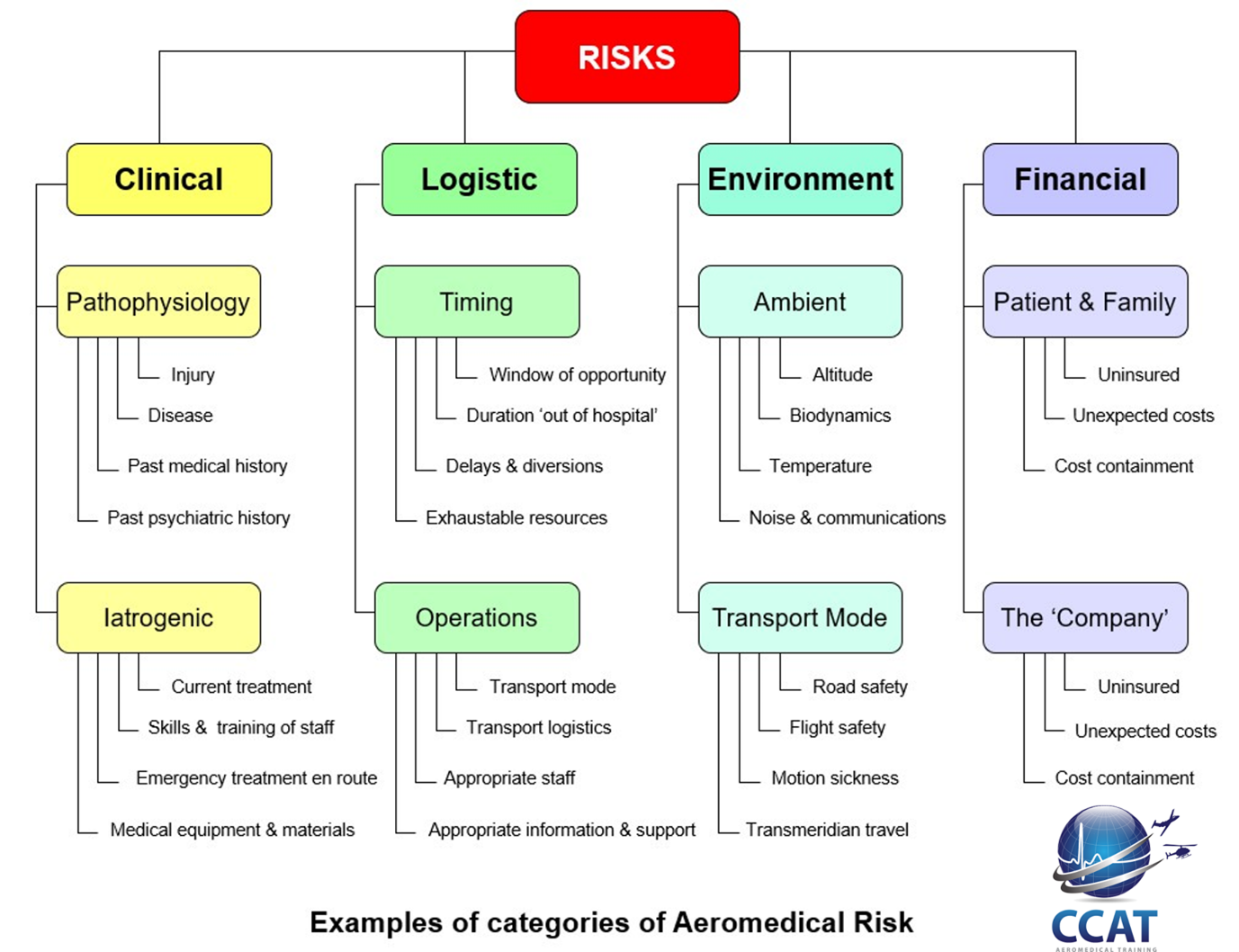Newsletter 2023
Newsletter September 2023: Circling the SQuARE - Patient Safety in Long Haul Air Ambulance Operations
Authors:
T.E. Martin, Ina Schmidt, Douglas Stevens
A report on safety issues in aeromedical transport is included in this newsletter on different Patient Safety topics. This field of acute medicine is yet an under-researched area of medicine, and the medical staff has to deal with a series of patient safety issues. The report “Circling the SQuARE: Patient Safety in Long Haul Air Ambulance Operations” provides a thought-provoking overview of the complex landscape of patient safety in aeromedical transport. The article underscores the importance of a holistic approach to patient safety in a specialised and evolving medical field by interweaving principles of non-maleficence, risk analysis, human factors, and specialised training.
In the history of medicine, the subspecialty of ‘transport medicine’ (clinical management of patients during air transport) is the newest kid on the block. Its origins lay in pre-hospital and immediate aid, with attention to care and comfort in the air. However, in the 21st century, aeromedical transfer and retrieval practitioners must also be knowledgeable in aerospace medicine, extreme physiology and critical care – each subspecialty that also has only a relatively short history in the long story of medicine.
However, by sheer coincidence of timing, transport medicine has sprouted in parallel to great introspection, massive awareness and some fantastic advances in patient care and best practice, improving patient safety.
The principle of non-maleficence, or primum non-nocere (‘first, do no harm’), is an ethical cornerstone for healthcare professionals around the world, and it reminds us to consider the possible harm that any intervention or situation may do, whether it be clinical, logistic or environmental. The principle is invoked when considering an intervention (physical, physiological, psychological, or pharmacological) that carries apparent risks of harm, weighed against a less certain chance of benefit.
ICARUS e.V. has adopted the CCATTM (CCAT Aeromedical Training) approach to patient safety, which has its basis with this cornerstone (the SQuARE) within a circle of evaluation.
Human Factors
The equally young speciality of Human Factors (known as CRM or ACRM) in medicine has also grown in significance and importance in the first decades of the 21st century. It has become compulsory education in critical medical specialities. CRM teaches us a lot about different types and error modes and the circumstances predisposing us to these frailties. ACRM (Aeromedical Crew Resource Management) identifies explicitly and focuses on crucial human factors unique to long-distance aeromedical transportation.
One of the greatest maxims in healthcare provision is that ‘more is missed in medicine by not looking rather than not knowing’. In place of ‘looking’, if we substitute the word ‘considering‘, it becomes obvious that if we omit to consider all the possibilities, we will commit errors of omission that can be life-threatening for patients.
Threat and Error Management (TEM) is an aviation management approach that assumes humans make mistakes and encounter risky situations. It focuses on the expectation that mishaps will occur and emphasises teaching people to detect and respond to threats and errors that are most likely to occur during flight operations. CCATTM has been teaching a similar system adopted for aeromedical transport missions since 2003. ICARUS e.V. recommends that the system has great potential for improving worldwide air ambulance patient safety for minimal cost and just a bit more training.
The CCATTM system lays its foundation on the well-known matrix for individual risk evaluation [Figure 2].
Figure 2. Risk matrix
Risk Assessments and Evaluation
Transporting patients to and between hospitals is a routine part of modern healthcare because not all hospitals offer all levels of patient care for all age groups and in all specialities. Patients, by the very nature of their illness or injury, are at clinical risk even before transport begins. Hence, risk analysis is essential because even the shortest transport has the potential to be hazardous. For this reason, every transfer’s benefits must be weighed against any potential for harm.
Figure three shows an example of the different categories of risks that patients can face, but also by aeromedical personnel, aircrew, and other groups such as the aircraft itself, the company, the public, specific co-providers and ground personnel. These categories can be considered ‘hiding places’ where risks, harms and mishaps lurk and await an opportunity to strike. It is, therefore, essential that all those undertaking risk evaluations pay great attention to all aspects of the patient, including past illnesses, chronic health conditions, psycho-social issues, etc., as well as the more obvious current problems, challenges, treatments and the potential effects of altitude and biodynamics on the patient’s physiology.
Figure 3. Categories of Aeromedical Risk
Risk Management
Once a matrix is created and the individual risks and hazards are located within it, allocating numeric scores or ‘warning colours’ is simple. Although the numbers can be nothing better than subjective, this is common for almost every other numerical scoring system that relies on human judgement, such as GCS, APACHE, and PAIN. Colleagues discussing or comparing their individually assessed scores will likely arrive at a richer and more accurate conclusion that can then be used to:
- Stratify risk levels
- Identify and prioritise control measures
- Manage each specific risk
- Form the basis of the individual patient’s mission transfer management plan.
- Set physiological and clinical targets for the patient transfer.
Training
Flight medical personnel require adequate training for the aviation role, with emphasis on the remoteness of the aircraft cabin at high altitude and the need to be prepared for all contingencies by ensuring that the patient is transported on an aircraft equipped for the worst-case scenario and staffed by personnel with appropriate skills, knowledge and experience, as well as achieving competencies on all equipment and procedures necessary for the safe conduct of the mission. Globally, air ambulance providers usually provide aeromedical transport training, but the duration, curriculums, quality and continuity are all extremely variable. ICARUS e.V. has adopted CCATTM training courses as the minimum essential standard for ab initio aeromedical personnel onboarding and ongoing CPD annual training requirements.
The CCATTM suite of training packages includes specific in-depth training for Risk Assessments, Evaluation and Management, and Aeromedical CRM. CPD training and monthly safety meetings are also used to discuss cases with particular attention paid to LEMONS (Lessons from Errors, Mistakes and OmissioNS). Typical, real-life LEMONS from the past few months include:
- (On a two-nurse mission) The flight nurse was confused by a patient with a sudden ‘unanticipated’ severe life-threatening bradycardia and managed him as if he was tachycardic.
- (On a two-nurse mission) No checklist was used before departure, and one bag with essential oxygen equipment was left behind at the base.
- (On a Dr/nurse mission) A non-flight team nurse ignored protocols and took over a patient offload, ignored the team leader/Dr, caused confusion, rushed the move, and the patient suffered a painful neck.
- (on a Dr/nurse mission) The nurse was tasked to run a 12 lead ECG on the patient whilst handing over the patient to the treating doctor. The nurse was not able to operate the 12-lead system on the monitor.
- (on a Dr/nurse mission) The nurse was tasked to receive a blood sample and run a blood gas analysis using an iStat bedside analyser. The nurse was not able to operate the iStat.
Hot debriefs, M&M sessions, incident reporting, and safety analysis are helpful to trap errors in the future, increase team awareness, facilitate remedial teaching and demonstrate QI (Quality Improvement). Safety Occurrence Reports indicate a genuine belief in a proper safety culture, and the transparency will be advantageous when set alongside performance reviews for accreditation audits, customer reviews, regulatory body supervision and teaching.
Conclusions
- Aeromedical transport is a unique speciality in which aviation and medical professionals face uncommon daily challenges and risks.
- Risk analysis allows us to deal with uncertainty and make informed decisions about every aspect of patient and mission safety.
- After considering analysis, risk management is directed toward providing the highest quality of medical care in the air.
- In addition, risk management improves flight safety, effective and efficient use of resources, and cost containment.
- The Safety, Quality, Assessment and Risk Evaluation (SQuARE) system is effective and straightforward.

International Community for Aeromedical Research and Universal Standards (ICARUS e.V.) is an international aeromedical professional association committed to patient-focused, quality critical care transport medicine.
We are building a global community of aeromedical professionals who share the same values to drive an absolute commitment to patient safety through quality care.
We aim to set universal standards for the aeromedical industry by promoting excellence in medical direction, research, education and training in collaboration with other international bodies and accrediting institutions.












